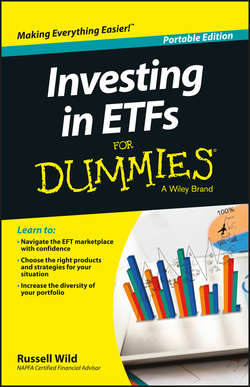Читать книгу Investing in ETFs For Dummies - Russell Wild - Страница 8
Part I
Getting Started with ETFs
Chapter 1
The (Sort of Still) New Kid on the Block
Getting the Professional Edge
ОглавлениеI don’t know about you, but when I take the kids bowling and – as happens on very rare occasion – I bowl a strike, I feel as if a miracle of biblical proportions has occurred. And then I turn on the television, stumble upon a professional bowling tournament, and see guys for whom not bowling a strike is a rare occurrence. The difference between amateur and professional bowlers is huge. The difference between investment amateurs and investment professionals can be just as huge. But you can close much of that gap with ETFs.
Consider a few impressive numbers
By investment professionals, rest assured I’m not talking about stockbrokers or variable-annuity salesmen, or my barber, who always has a stock recommendation for me. I’m talking about the managers of foundations, endowments, and pension funds with $1 billion or more in invested assets. By amateurs, I’m talking about the average U.S. investor with a few assorted and sundry mutual funds in his 401(k).
Let’s compare the two: During the 20-year period 1990 through 2009, the U.S. stock market, as measured by the S&P 500 Index, provided an annual rate of return of 8.2 percent. Yet the average stock mutual fund investor, according to a study by Dalbar, earned an annual rate of 3.2 percent over that same period, just barely keeping up with the inflation rate of 2.8 percent a year. Bond-fund investors did much worse. Why the pitiful returns? There are several reasons, but two main ones:
✔ Mutual fund investors pay too much for their investments.
✔ They jump into hot funds in hot sectors when they’re hot and jump out when those funds or sectors turn cold. (In other words, they are constantly buying high and selling low.)
Professionals tend not to do either of those things. To give you an idea of the difference between amateurs and professionals, consider this: For that very same 20-year period in which the average stock mutual fund investor earned 3.2 percent, and the average bond mutual fund investor earned 1 percent, the multibillion-dollar stock-and-bond-and-real-estate California Public Employees’ Retirement System (CALPERS) pension fund, the largest in the nation, earned nearly 8 percent a year.
You can do what they do!
Professional managers, you see, don’t pay high expenses. They don’t jump in and out of funds. They know that they need to diversify. They tend to buy indexes. They know exactly what they own. And they know that asset allocation, not stock picking, is what drives long-term investment results. In short, they do all the things that an ETF portfolio can do for you. So do it. Well, maybe … but first read the rest of this chapter!
